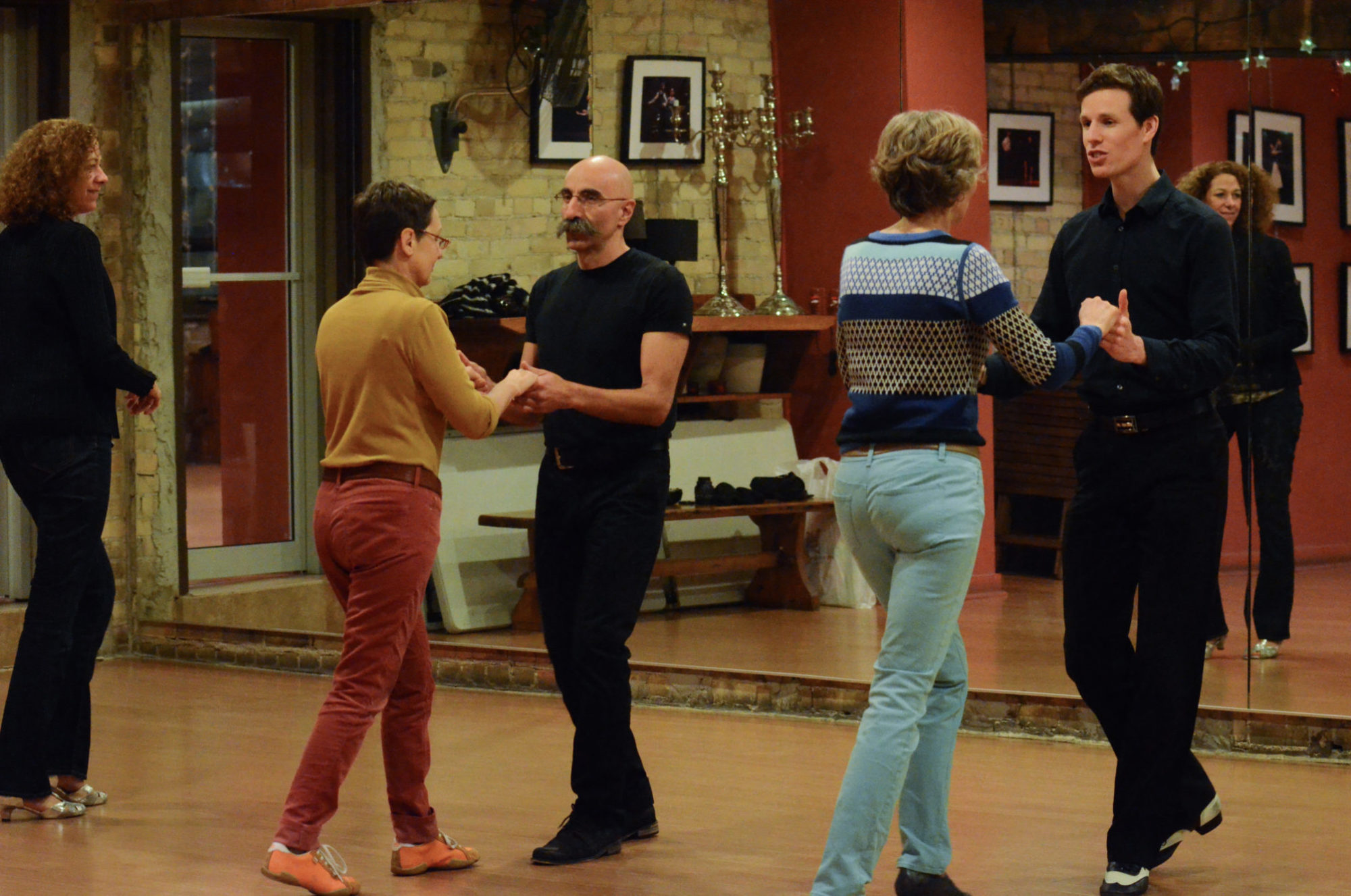In the last article, we tackled the psychological reasons why ‘following’ in a ballroom dance may not be as bad as we think it is. Now, we look at specific techniques that help us connect and respond to our leader. Then we will finish off with a learning strategy to polish these techniques with minimal frustration.
1. Posture
I’m sorry, students of British boarding schools, but your teachers were right - you do look better when you stand up straight. Imagine yourself on a diving board, poised on the balls of your feet, ready to spring into action. This will keep your balance when your partner pushes against you, avoiding that unpleasant ‘falling backwards’ feeling. Don’t lean on your partner - if he slips, you’re both taking a hard trip to the floor.
2. Frame
Our frame is the space we create with our arms and body, prepares us to receive a lead without getting stepped on. A good frame uses muscle tension in the arms, shoulders, chest and back to decrease response time. Imagine pushing against the branches of a young tree. It bends, with resistance, against your pressure, but snaps back into place when you release. This how you want your frame to behave when your partner leads you.
3. Pressure
Now that your frame is in place, it’s time to establish your partner connection. I recommend about 5 pounds of pressure to start, on each point where your hands connect with your partner, and vice versa. No matter where he moves you, or how quickly, return as soon as you can back to that optimal pressure-level. You are water through which he is swimming. Resist him like water, not like air (very little pressure) or rock (too much pressure).
4. Wait for your partner
It’s tempting to ‘back-lead’ when we recognize a pattern our partner is guiding us through. Despite this, the best thing you can do for your partner, and yourself, is practice making him move you - make it clear if he doesn’t tell you where to go, you aren’t going anywhere. This helps him because he has no choice but to give you stronger signals, and helps you by teaching you how to respond to your partner, even if he surprises you.
5. Focus on the connection
When we are less comfortable with a pattern, we tend to panic, and our conscious brain takes over and starts interfering with our honed dance instincts.
To avoid this, we need to stay focused on where the information is coming from, i.e. the connection. Focus on the pressure in the contact points, increase the pressure if you need to, let it become your whole world. Trust that your instincts will react accordingly, and stay calm. Make your partner throw different variations at you to practice.
Putting it all together
If you take one thing from this article, take this: the brain can only focus on one thing at a time. Start with each technique in order; each one builds on the next. For instance, you might practice walking slowly, ending on the ball of your foot each time. When that starts to feel automatic, add on your frame, and so on.
If you get overwhelmed or some of the earlier techniques are starting to slip, back up and try again. REMEMBER: be patient with yourself. To paraphrase a wise monk, the more you take your time, the faster you learn. Good luck!
P.S. Stay tuned for part 3, when we look at how the leader can take charge on the dance floor, while still leaving his partner time to shine.
